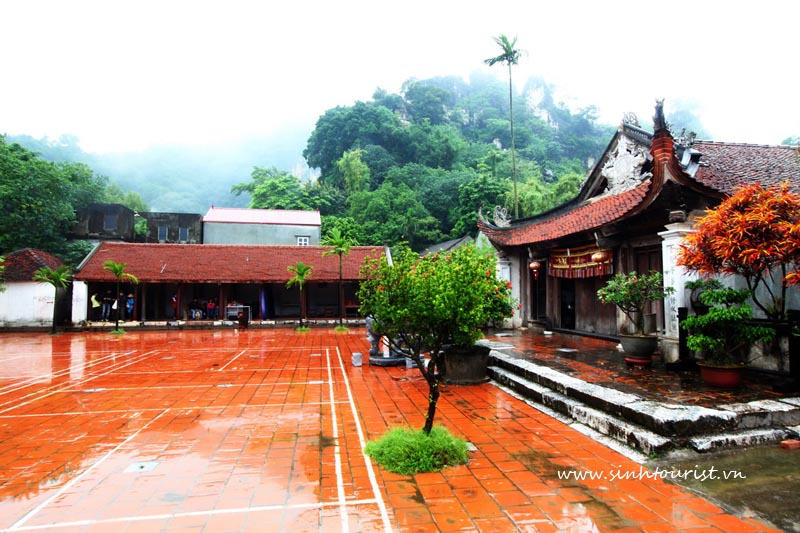

This pagoda is famous for its beauty art of architecture, charming mountain and mystery, sacred legends of Tu Dao Hanh life, a famous Zen master in the period of Ly dynasty. According to documents, Thay Pagoda was rebuilt in the reign of King Ly Nhan Tong (1072-1027) from a small old temple named Huong Hai. The cultural uniqueness of Doai region creates the sacred feature of this land.

And Doai region has a long-standing history. The name of Doai is said to come from the verse “Doai Phuong tinh nhat khu” which means Doai region, the land in the West of the capital is a quiet land. Thay Pagoda is categorized as cultural-historical monument in Doai region. Going to Thay Pagoda Festival pilgrims have an opportunity to revere the relics imbued with the imprints of outstanding monks and men of the past.Thay Pagoda locates in the superb mountainous landscape.

Tu Dao Hanh is said to be the founder of this artistic performance. It is performed at the Thuy Dinh House in Long Tri pond in front of the pagoda. Wearing fine outfits, holding sticks to which are decorated with flowers, Buddhist monks chant Buddhist sutras while dancing to display the journey of mankind in striving for noble things.Īmong fascinating games in Thay Pagoda Festival, water puppetry stands out. The offerings in various kinds and different colours are out into the altar, looking impressive in the smoke of incenses and candles. Normally the procession comes to the pagoda at twilight.Īt the pagoda the ritual of presenting offerings to Buddha is held in a solemn manner to the accompaniment of musical instruments. Noteworthy is that in the procession the tablet and white horse of Da Phuc must go ahead those of the Thuy Khue. Each village carries its own tutelary god’s tablet. Covering under a yellow cloth, the colour of the outfits worn by those having supernatural powers, the tablet is carried by four representatives from the four villages mentioned above. The procession of Tu Dao Hanh’s worshipping tablet takes place on the 7th day of the third lunar month, with the participation of four villages Thuy Khue, Da Phuc, Sai Khe and Khanh Tan. The rite of cleaning objects of worship comes after this statue bathing ritual. The cloths are also torn into smaller pieces to divide among the people as they are thought to have the power of warding off the evils. When the ritual ends, the used water, the holy water the Buddha bestows, will be scattered all over the pagoda in a wish for bumper crops and prosperous life. Those standing around solemnly hold their hands in front of their chests, whispering Buddhist sutras. Pieces of red cloth are used to clean the statues. Buddhist monks and the people participate in the ritual. The statue bathing ritual takes place before the opening of the festival. The Pagoda is cleaned and incenses, candles lit, bringing about a charming scene. Several days prior to the festival, Buddhist followers and pilgrims far and near flock to the pagoda, further adding to the boisterous atmosphere of the festival. The Thay Pagoda Festival is held on the seventh day of the third lunar month in remembrance of his merits.

He had outstanding merits regarding the popularization of the religion, the treatment of diseases for people and the creation of many games original to Vietnam, including water puppetry. Tu Dao Hanh was a Buddhist monk in the Ly Dynasty. Objects of worship: Buddhist monk Tu Dao Hanh – founding father of the water puppetry in Vietnam.Ĭharacteristics: The procession of the worshipping tablet, water puppetry and so on. Place: Thay Pagoda (Thien Phuc tu), Sai Son Commune, Quoc Oai District, Hanoi Capital. Time: From the 5th to the 7th day of the third lunar month, main festival day on the 7th day of the third lunar month.


 0 kommentar(er)
0 kommentar(er)
